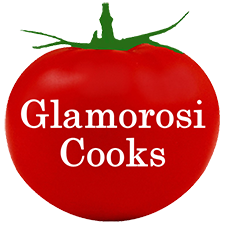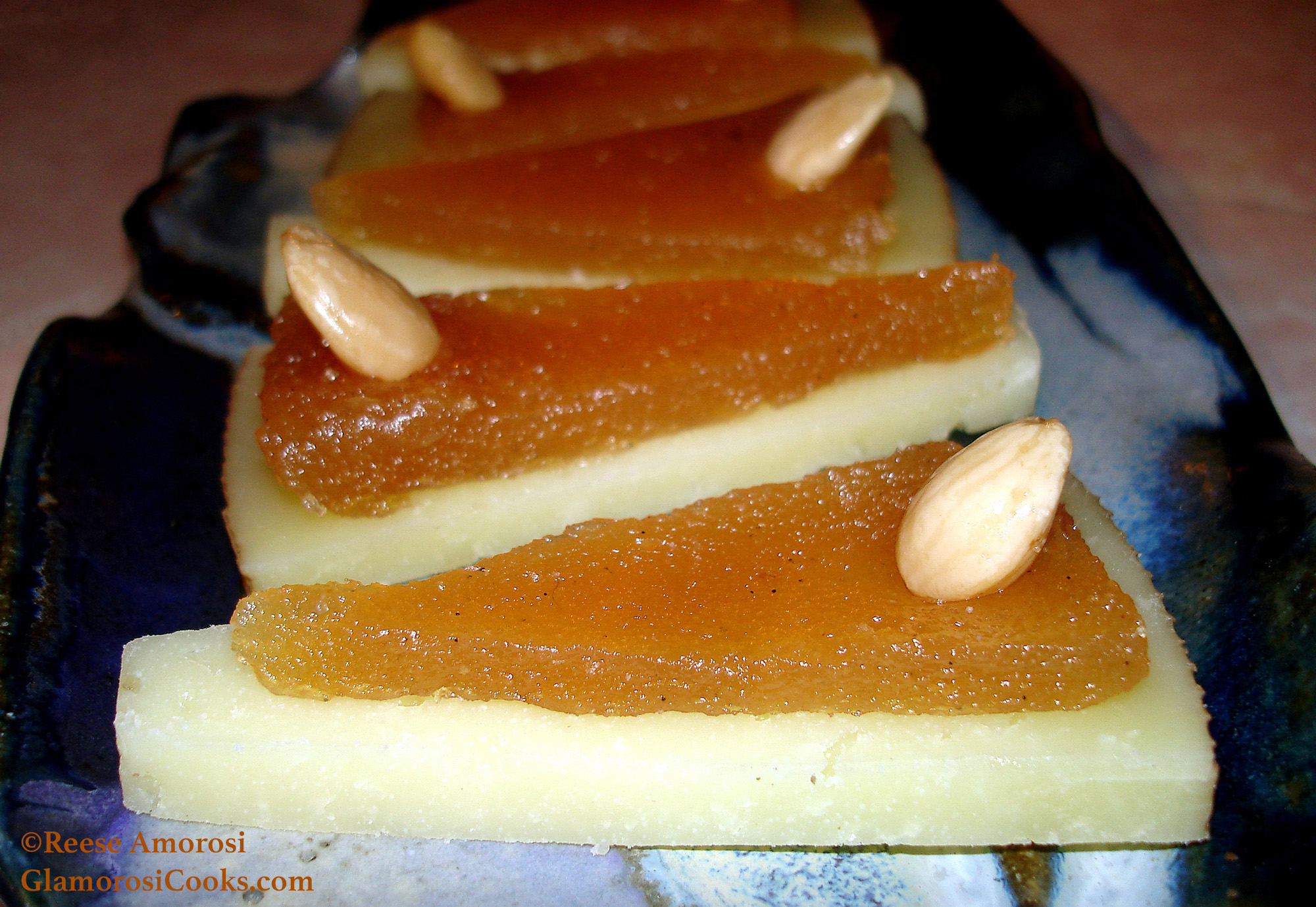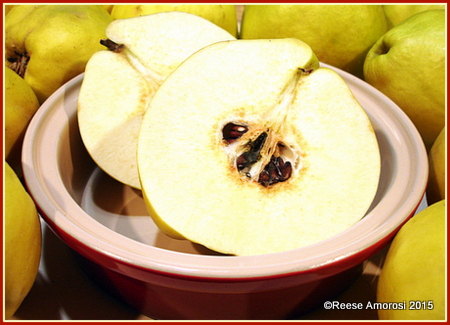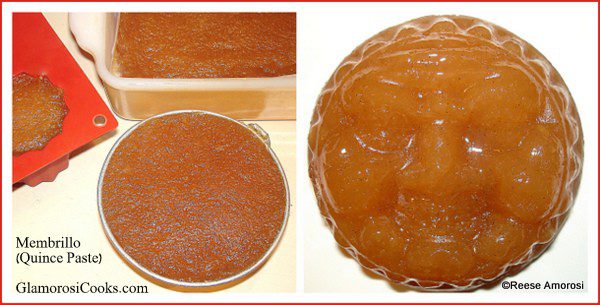Membrillo (aka Quince Paste) is made from quince, a fragrant yellow fruit in the apple and pear family. It originated in Spain where it is popular with breakfast or as dessert. Membrillo pairs well with Manchego cheese for a sweet and savory treat, and it is a wonderful addition in baked goods including cookies and pastry.
My family has a long tradition of spending the Fall making quince dishes. I love quince so much so that I now grow my own. Click here to read about the adventures my late Father and I had harvesting and cooking quince, and then make this vegetarian recipe for Membrillo.
Membrillo requires 2-3 hours of stirring, so it’s fun to make a party of it with friends and family when possible. The fruit will usually turn from yellow to a rosy blush color as it cooks. Membrillo needs to be cured in a warm, dry place for 24 hours – an empty microwave or breadbox will do.
You can make your membrillo in a regular pan (rectangle, square, round) and then cut it into your desired shape. Or, you can break out your molds and make neat shapes. I like to use pretty butter molds and serve each guest their own personal membrillo. Some ideas are covered in the recipe below, but the possibilities are truly endless. As a guideline, this recipe yields two 9-inch square pans, enough to keep one and make gifts with the other.
Store membrillo in parchment paper and place in an airtight container in the refrigerator. Membrillo will keep for at least 3 months.
To submit questions or thoughts about this recipe, please scroll down and post in the comments section below.
If you enjoy this Membrillo recipe, you may also like this Cherry Chutney Recipe.
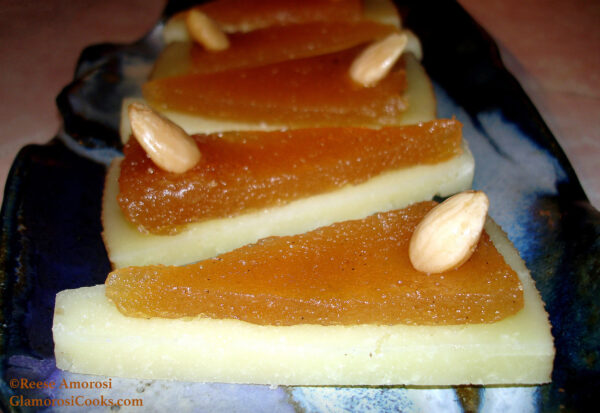
| Prep Time | 35 minutes |
| Cook Time | 5 hours |
| Passive Time | 24 hours |
| Servings |
|
- 8 quince
- 2 quarts spring water
- 1 vanilla bean
- 2 lemons juiced
- 5-7 cups sugar (amount to be determined mid-recipe)
Ingredients
|

|
- Place water, lemon juice and vanilla bean in pot. Peel and core the quince then cut it into slices, adding to the pot of water as you go. Quince can be hard to cut, so take your time and watch your fingers! I use a chef's knife to make the cuts, and a paring knife to remove the core and stem.

- Bring to boil and then reduce heat to low and simmer for around 45 minutes. Drain quince, let cool, remove vanilla bean but don't discard (you'll be adding it back in in a minute).
- Puree the cooked quince in batches in a food processor, placing it in a large bowl as you're done each round. If you like, you can pass the puree through a chinois or strainer to ensure there are no lumps. When done, measure the total amount of pureed quince, then add the same amount of sugar into the quince. My 8 quinces yielded 5.5 cups of puree, so I added 5.5 cups of sugar.
- Place quince and sugar back into the pot, scrape vanilla bean seeds into the mix, and simmer on low, stirring almost constantly for 2-3 hours until the color deepens and the puree is thick enough that it stays separated when you run a spoon or spatula through it. Be sure to keep your heat low or the mix will burn (even when properly cooked on the lowest heat possible you may see a few dark spots of hard candy forming – just remove them and keep stirring). Be careful! The mix will pop every so often, so I hold a splatter screen or lid in front of me when I stir.
- When the mix is almost done cooking, pre-heat your oven to the warm setting – the goal is for the low heat help dry the paste – and then prep your molds so you can work quickly once the paste is ready because it cools and thickens fast. Line a square or rectangle pan with parchment paper then spread the quince paste onto it – I usually make it 3/4 of an inch to an inch and a half thick so it dries properly. You can also use decorative molds – silicone works well because it's non-stick and it's easy to push the paste out. When using intricate metal molds (like my vintage moon face shown below), I prep them with cooking spray because parchment paper would ruin the design.

- Place the molded quince paste in the warm oven for 30 minutes, then remove and cover with cheesecloth (or loosely cover with parchment paper) and let it sit in a warm, dry place to finish curing. After a day or so cut it into the shape that works for your presentation (cubes, rectangles, points, etc.) and serve with cheese; we like the combination of Manchego cheese and Marcona almonds.
~ Some people roll pieces of membrillo in sugar and eat it as candy.
